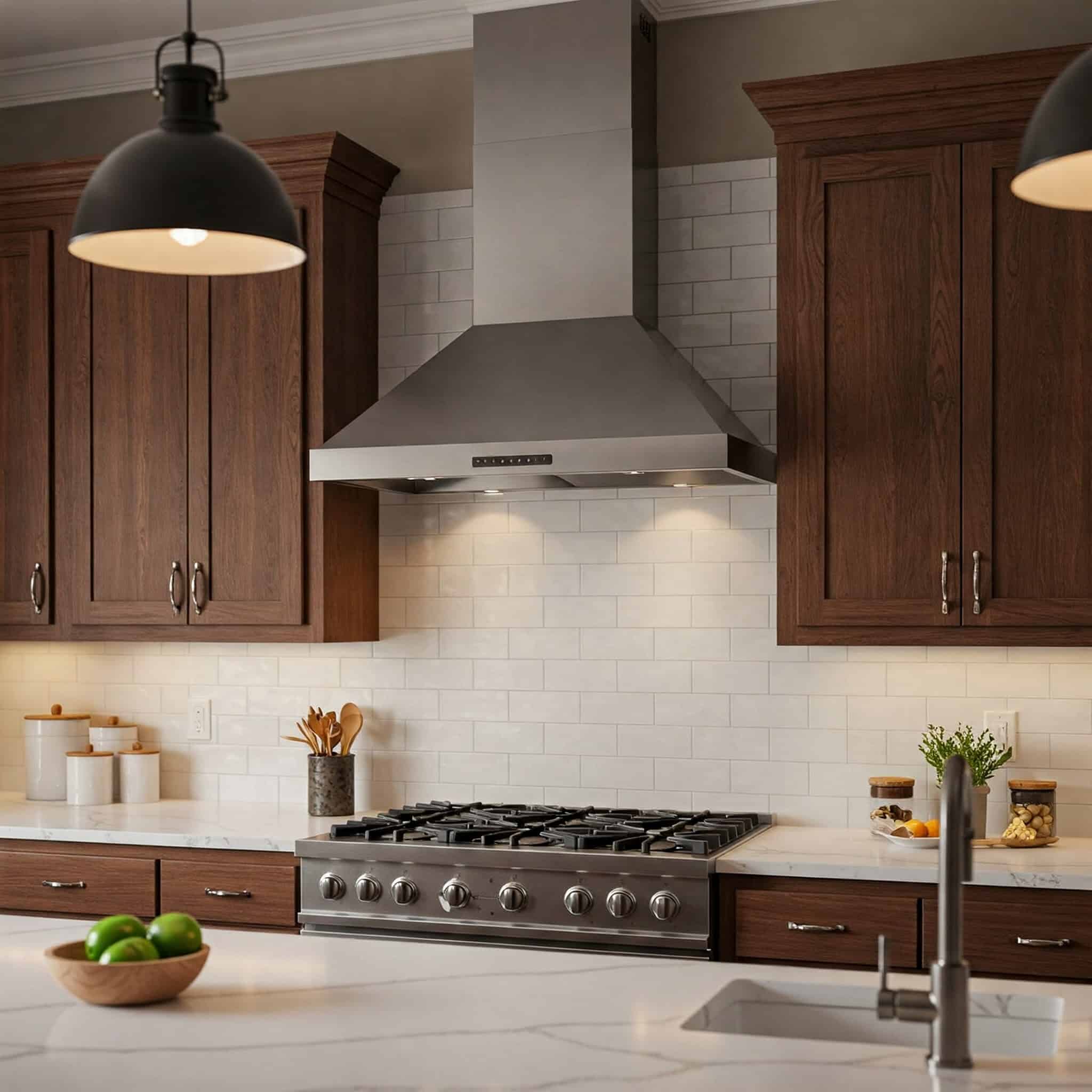
Question: How Do You Get Good Ventilation in a Kitchen?
Answer: To get good ventilation in a kitchen use a range hood that vents externally, open windows, and use a fan to circulate air. Ensure proper airflow by minimizing obstructions around vents.
Fresh Air for a Healthier Kitchen
A well-ventilated kitchen improves air quality, removes cooking odors, and reduces moisture. This guide explains how to achieve good kitchen ventilation using various methods. You will learn about range hoods, exhaust fans, and natural ventilation techniques. Discover how these options work and which best suits your needs.
Range Hoods: Clearing the Air Above Your Stove
Range hoods sit above your stove and capture smoke, grease, and steam. They improve indoor air quality. Range hoods offer several benefits. They remove cooking odors, reduce moisture buildup, and protect cabinets from grease. Two main types of range hoods exist: ducted and ductless.
Ducted Range Hoods
Ducted range hoods vent air outside through a duct system. They offer the best ventilation. Ducted hoods effectively remove smoke and odors. They require professional installation.
Ductless Range Hoods
Ductless range hoods filter air and recirculate it back into the kitchen. They are easier to install than ducted hoods. Ductless hoods are less effective at removing odors and moisture. They require regular filter changes.
Choose a range hood with a CFM (cubic feet per minute) rating appropriate for your stove size and cooking style. Higher CFM ratings indicate more powerful ventilation.
Click here for more information on kitchen refacing near me Toronto
Related Article: Is an Exhaust Fan Effective in the Kitchen?
Related Article: Where Should a Kitchen Vent Hood Be Placed?
Natural Ventilation: Harnessing the Power of Fresh Air
Natural ventilation uses open windows and doors to circulate air. This method costs less than mechanical ventilation. Natural ventilation relies on natural air currents. It can be less effective in certain climates or during specific times of the year.
Cross-Ventilation
Open windows on opposite sides of the kitchen to create cross-ventilation. This maximizes airflow. Cross-ventilation removes odors and cools the kitchen naturally.
Window Placement
Strategically placed windows enhance natural ventilation. Windows high on walls allow hot air to escape. Lower windows introduce cooler air.
Improving Existing Ventilation: Simple Upgrades for Better Airflow
You can improve existing kitchen ventilation without major renovations. Simple upgrades can make a big difference. These upgrades often involve minimal cost.
Regular Cleaning
Clean range hood filters regularly. This improves efficiency. Clean exhaust fan blades to maximize airflow.
Sealing Gaps
Seal gaps around windows and doors. This prevents air leaks. Sealed gaps improve ventilation effectiveness.
Adding Plants
Certain plants filter indoor air. They improve air quality naturally. Consider adding air-purifying plants to your kitchen.
Makeup Air Systems: Balancing Airflow for Optimal Ventilation
Makeup air systems introduce fresh air into the kitchen. They balance the air pressure. This improves the effectiveness of exhaust fans and range hoods. Makeup air systems prevent backdrafting.
Types of Makeup Air Systems
Several types of makeup air systems exist. Some systems use dedicated ducts. Others integrate with HVAC systems. Choose a system appropriate for your kitchen and climate.
Benefits of Makeup Air Systems
Makeup air systems improve indoor air quality. They increase comfort. These systems can also reduce energy costs.
Choosing the Right Ventilation System
Consider several factors when choosing a kitchen ventilation system. Think about your cooking style. Assess your kitchen size. Determine your budget.
Cooking Style
Frequent cooks need more powerful ventilation. Consider a high-CFM range hood or exhaust fan. Infrequent cooks may find natural ventilation sufficient.
Kitchen Size
Larger kitchens require stronger ventilation. Choose a system appropriate for the volume of your kitchen.
Budget
Ventilation systems range in price. Set a budget before you shop. Consider the long-term costs of operation and maintenance.
Conclusion
Good kitchen ventilation is essential for a healthy and comfortable home. By understanding the different ventilation options and considering your specific needs, you can create a kitchen with fresh, clean air. Whether you choose a range hood, exhaust fan, or natural ventilation, the right system will enhance your cooking experience and improve indoor air quality. Don’t forget to maintain your ventilation system regularly for optimal performance. With these tips, you can enjoy a well-ventilated kitchen that keeps your home fresh and inviting.

Blue Malue Get in touch with Blue here.
